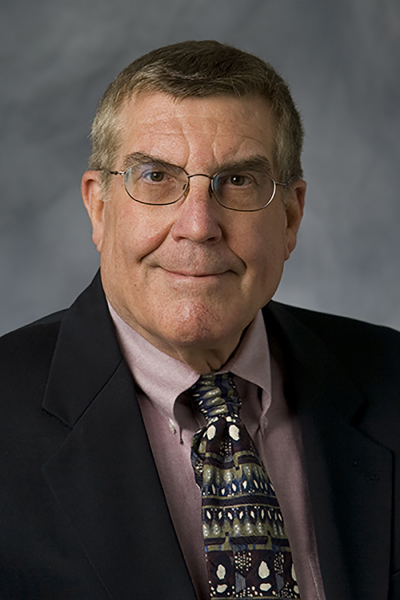

The Duke University Department of Computer Science and members of the broader Duke community mourn the loss of Professor Donald J. Rose. Don served Duke for 31 years, including 7 years as department chair. Prior to joining, he worked at University of Denver, Harvard University, Vanderbilt University and Bell Labs.
Don worked in numerical linear algebra, focusing especially on sparse matrices, an area in which he made seminal contributions, some of which are so widely known that they are simply taken for granted today. He developed deep insights on the relationship between variable elimination in systems of linear equations and operations on graphs. These insights informed not only Don's field, but echoed decades later as the artificial intelligence community developed probabilistic graphical models such as Bayesian networks and Markov random fields.
With Richard Lipton and Bob Tarjan, Don analyzed and generalized the nested dissection algorithm, a technique for solving systems of linear equations that was influential for many years. With Wolfgang Fichtner and Randolph Bank, he developed efficient techniques for simulating semiconductor devices using differential equations. This work applied Don's expertise in numerical computing to the increasingly important area of VLSI design and simulation. Don's team alone had over a dozen follow-on papers in this area.
In total, Don published over 60 technical papers, many of which have garnered hundreds of citations.
Don joined the Department of Computer Science as chair in 1984, with a secondary appointment in Mathematics. Don made modernizing the department's infrastructure and faculty development top priorities. Before Don joined, the department's connection to the outside world was via 300 baud modems. Don brought in over $2 million for department equipment, resources used to introduce new technologies to the department that were subsequently rolled out university-wide. These included ubiquitous email over TCP/IP, modern telephone switches, powerful workstations for all faculty and graduate students and, finally, high-speed internet connectivity. With the help of Associate Chair Dietolf Ramm, he oversaw the design of the department's new space in the LSRC building, the department's current home.
Don recognized that computer science was a national field and that Duke was competing for faculty talent not only with other universities, but with powerful industry concerns. He worked to increase faculty salaries while simultaneously recruiting outstanding new faculty. This helped launch the department on a steep, upward trajectory.
After stepping down as chair, Don continued to be a passionate and vocal advocate for the department. In his later years, Don was an important proponent of interdisciplinary study at Duke. He was the original inspiration for and driving force behind Duke's unique Master's of Science in Economics and Computation program. He played key parts in both the design and the administration of this program, and also designed and taught a numerical computation course specifically for students interested in economics.
In spring of 2015, Don developed a staph infection that his medical team was unable to eradicate fully. On June 12, 2015, he succumbed to sepsis, a complication of the staph infection. He is survived by his daughter Tamar J. Rose-Hendricks, and 4 grandchildren Jennifer Crilly (age 25), Thomas Parrish (age 22), Dakota Hendricks (age 12), and Alexander Hendricks (age 10).